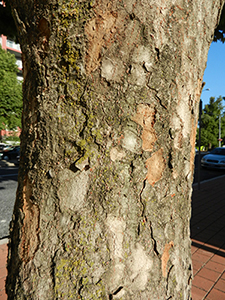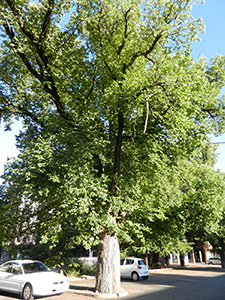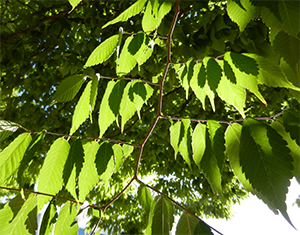Zelkova serrata


Other common names
Japanese: keyaki; Chinese: ju shu.
Origin of the species name
Zelkova is derived from the south Caucasian name for Zelkova carpinifolia; serrata is Latin for saw and refers to the jagged edges of the leaves.
Family
Ulmaceae
Date planted
June 2011
Lifespan
Trees of this species can live for over 1000 years.

General description
It is a medium to tall deciduous tree with a short trunk and erect to spreading branches forming a broad, round head. The bark is greyish white/brown shedding to reveal an orange inner bark. The leaves are simple and ovate with serrated margins and change to a variety of yellows, oranges and reds in autumn. The yellow-green flowers occur in tight groups and the fruits are small, pea-green drupes. Height 20m Spread 12m.
Natural distribution and habitat
The species is native to Japan, Korea, eastern China, Taiwan and the Kuril Islands (Russia) where it grows in alluvial soils beside streams in the lowlands and mountains at altitudes of 500-2000m.
Conservation status
It is not classified as a threatened species.
Planting pattern
Planted in straight lines around a rectangular clearing, with other long spaces among the lines of trees.
Uses
The wood is valued in Japan and used often for furniture, as well as the creation of taiko drums. It has also become a very widely planted tree both in Asia and elsewhere. The tree is a symbol of a number of Japanese cities and prefectures. It has been used an alternative to elm trees where Dutch elm disease is common. It is also widely used in bonsai.
